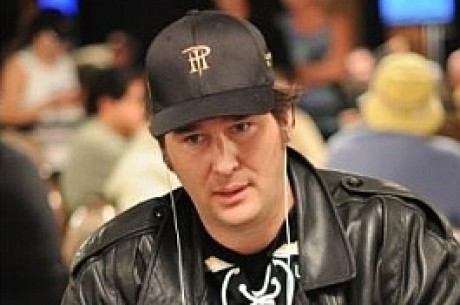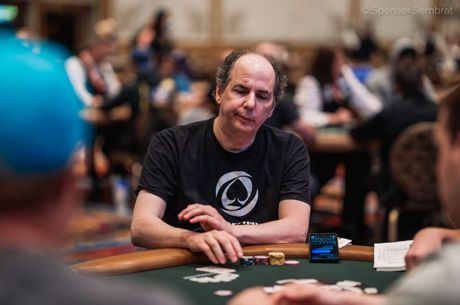The PokerNews Top 10: Significant WSOP Innovations

After that final, exciting rush of eliminations last Wednesday night, the first seven weeks of the 2009 World Series of Poker came to a dramatic and sudden conclusion. The final table for the Main Event has been set, and now everyone waits until November for the WSOP to resume, following a change instituted last year whereby the Main Event��s concluding act will be delayed in order for ESPN to air four months�� worth of episodes portraying action from this summer.
When the idea for the delayed final table and the creation of the ��November Nine�� was first introduced in May 2008, fans and players debated its merits, with some praising the idea and others objecting strongly. Amid those debates, some were quick to point out that the change did not represent the first example of a major innovation at the WSOP. Indeed, over the forty years of the Series�� history, many changes have been made to the schedule and operation of the Series, changes which have helped shape how the WSOP has functioned and what the Series has come to represent in the poker world.
What follows is a list ranking the most significant of such innovations. It should be noted this list is not qualitative �� that is to say, these are not meant to represent the ten ��best�� innovations introduced at the WSOP. In fact, a quick glance at the list shows that almost all of the changes have been met with reservation and in some instances outright criticism. However, in each case the ultimate significance of the change to how the WSOP runs and is viewed is likely above debate.
10. Introduction of Ladies�� Event (1977) and Seniors�� Event (2001) (tie)
In 1977, a low buy-in ladies�� only event was introduced at the WSOP. Originally the game played was seven-card stud, until 2000 when the ladies switched to a mixed-limit hold��em/seven-card stud event, then in 2001 switched to no-limit hold��em. Until 2004 when the Series moved from the spring to later in the summer, the Ladies�� event was traditionally played on Mothers�� Day. A ��seniors�� no-limit hold��em event was also introduced in 2001, another low buy-in event for which entrants had to be at least 50 years old to play. Both the ladies�� event and the seniors�� event were redubbed ��World Championship�� events in 2007. While some �� including women and so-called ��seniors�� �� object strongly to the notion of restricted-entry bracelet events being included in the WSOP schedule, there is no denying that the presence of these events has brought hundreds of players to the Series who otherwise would not have come.
9. Introduction of Preliminary Events (1971)
It was not until the second year of the World Series of Poker that an actual schedule of events was introduced, with a ��main�� event �� the no-limit hold��em tournament with which the WSOP concluded �� and ��preliminary�� events in which other forms of poker were played. Four preliminary events were played in 1971, all limit games: five-card stud, seven-card stud, razz, and ace-to-five draw. Just one preliminary event was played in 1972 (five-card stud), then multiple preliminary events were again brought back the following year. The preliminary event schedule has gradually expanded over the years, growing from just a handful of events initially to 12 (1977), 20 (1993), 34 (2002), 44 (2005), 54 (2007), and 56 (2009). While the Main Event continues to highlight the schedule and draw the most attention, the many preliminary events have undoubtedly helped shape how the WSOP is often regarded, namely, a series of tournaments testing players�� skills in a host of different poker games.
8. Creation of WSOP Commissioner (2006)
The World Series of Poker was the brainchild of Benny Binion, owner of Binion��s Horseshoe casino where the WSOP was staged during the first three-and-a-half decades of its existence. Soon after Harrah��s purchased the Horseshoe and thus took over stewardship of the WSOP in 2004, Gary Thompson was named ��Director of the World Series of Poker Tournament Operations and Communications�� and helped manage the Series�� rapid expansion during that period. In 2005, Harrah��s hired Jeffrey Pollack as Vice President of Marketing. Pollack had held similar positions previously with both the NBA and NASCAR. In January 2006, Harrah��s named Pollack the ��WSOP Commissioner,�� a position he has held ever since. All subsequent innovations that have occurred at the WSOP �� e.g., changes to the schedule, the introduction of various corporate sponsorships, the creation of the Players Advisory Committee �� are connected to the change which created this new and important leadership role, filled by Pollack over the last three-and-a-half years.
7. Redistribution of Prize Pool for Main Event (1978)
Through 1977, the WSOP Main Event awarded only a single cash prize to the player who managed to collect all of the chips and win the tournament. It was a ��winner take all�� format, meaning, for example, when Doyle Brunson won his second straight Main Event title in 1977, he collected the entire prize pool of $340,000 to which the 34 entrants that year had contributed. The following year, it was decided to divide up the prize pool among the top five finishers (of the 42 who entered), with winner Bobby Baldwin collecting 50% of the money ($210,000) and those finishing second through fifth earning 20%, 15%, 10%, and 5% respectively. As the Main Event grew, the payout schedule was adjusted accordingly, with the top 10% of finishers generally making it into the cash. As a result, the champion��s share has grown gradually smaller, with this year��s winner��s prize of $8.5 million-plus representing about 14% of the $61 million-plus prize pool.
6. Introduction of Satellite Tournaments to Gain Entry into Main Event (ca. 1979-80)
Preceding Gary Thompson as WSOP director was Eric Drache, who helped the Binion family run the Series from 1973 to 1987 and who is one of the people perhaps most responsible for the WSOP��s transformation from an annual reunion of poker playing colleagues into a highly organized series of events recognized by all as the central focus of the poker calendar. Drache is also the man usually cited as having conceived of the idea to have players play ��satellite�� tournaments to win entries into the $10,000 buy-in Main Event. The story goes that in 1979 or 1980 Drache first introduced the idea to a table of players, each of whom had about $1,000 sitting in front of him, that they play a single table, winner-take-all tournament for a Main Event entry. In 1983, Tom McEvoy became the first Main Event winner to have gained his seat via a satellite, and today it can be reasonably assumed that a significant percentage of players who play the event win their way in via satellite rather than pay the full entry fee.
5. Introduction of the $50,000 H.O.R.S.E. Event (2006)
Despite inflation and the changing significance of the dollar, the entry fee for the WSOP Main Event has steadfastly remained at $10,000 since 1973. One of the first suggestions made by the newly formed Players Advisory Council instituted by WSOP Commissioner Jeffrey Pollack in early 2006 was the creation of a higher buy-in tournament whose price tag would make it exclusive to full-time professional players of the highest stakes. The original $50K H.O.R.S.E. tournament concluded with a no-limit hold��em final table and was won by the late David ��Chip�� Reese. Since 2007, the tournament has been played following the H.O.R.S.E. format from beginning to end, resulting in some especially long final tables such as the 20-hour marathon from which David Bach emerged as the winner this summer. A second high buy-in event was introduced to the schedule this year as well, the ��Special 40th Annual No-Limit Hold��em event�� (No. 2) won by Vitaly Lunkin.
4. Televised Broadcast of the WSOP (1973)
The first televised broadcast of the World Series of Poker happened way back in 1973 when Jimmy ��The Greek�� Snyder and CBS filmed an hour-long documentary on that year��s Main Event. Later that decade, CBS would again cover the WSOP Main Event and air footage during its weekend sports anthology show, ��CBS Sports Spectacular.�� In the late 1980s, ESPN would begin airing hour-long shows highlighting the action from the Main Event, but it wasn��t until 2003 and the introduction of the hole-card camera that televised poker began to capture the viewing public��s fancy. That year ESPN produced seven one-hour episodes, culminating in the surprise victory of amateur Chris Moneymaker. Subsequent milestones in televised poker at the WSOP include ESPN��s coverage of preliminary events (begun in 2004), ��pay per view�� telecasts of the final table (2006-2007), and the live streaming of preliminary event final tables via the internet (2007-2009).
3. Introduction of the ��November Nine�� (2008)
Love it or hate it, the delayed final table has fundamentally changed how the WSOP Main Event tournament is perceived, marketed, and played. The airing of last year��s final table in what was called a ��plausibly live�� format drew a much larger audience than did the two hours devoted to the 2007 WSOP Main Event final table, with the 2.4 million viewers who watched Peter Eastgate��s victory representing a 46% increase over the previous year��s audience. Many cited that increase in viewership as signifying the November Nine��s success, although others suggested hype-building opportunities were squandered during the four-month interim.
2. Introduction of the WSOP Bracelet (1974)
When Johnny Moss was named ��World Champion Poker Player�� at the inaugural World Series of Poker in 1970, he won no specific cash prize, other than what he claimed during the various cash games that were played. Nor did he receive a bracelet for his achievement; rather, he was given a silver cup. The Official Media Guide for the 2009 WSOP reports that it was not until 1974 that a bracelet was awarded at the WSOP, and then only to the Main Event winner. Then from 1975 onward gold bracelets were given to winners of all events, including preliminary events (except for 1982 when gold watches were awarded instead). Even those who won WSOP events during years when bracelets were not awarded are spoken of as having won bracelets, the tradition having become such an integral part of the WSOP.
1. Introduction of a Freezeout No-Limit Hold��em Tournament to Determine WSOP Champion (1971)
That first year Johnny Moss did not win the WSOP by outlasting his opponents in a poker tournament, but rather by being named the best of the group in a vote of all the participants. The following year it was decided to hold a no-limit hold��em tournament to determine the series champion, and Moss once again emerged as the victor. That initial tournament had a $5,000 buy-in. In 1972, the buy-in was also $5,000, but Benny Binion contributed an additional $5,000 per player into the prize pool. In 1973, the buy-in was made $10,000, where it has remained ever since. The introduction of the Series-ending tournament was indeed a master stroke, and despite other changes over the years, the ��Main Event�� remains the single most popular �� and most coveted �� poker tournament in the world.








